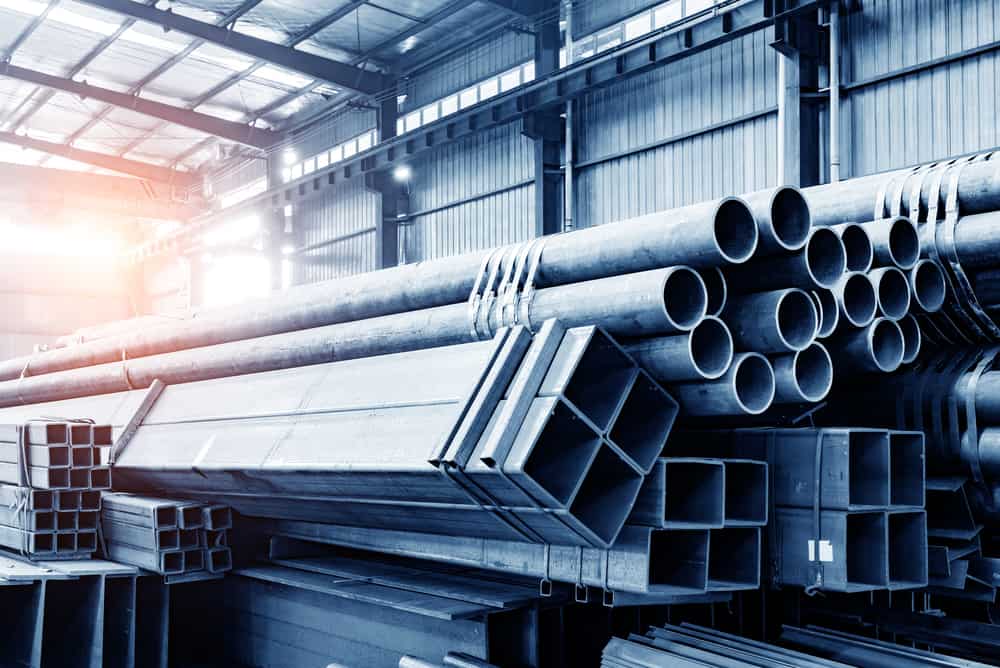When carrying steel products by sea, it is essential to ensure that neither the steel, nor the ship, suffers damage, that the ship is fit to receive cargo, and that the cargo is safely stowed and secured.
Steel is a high-value cargo – a cargo easily damaged by rough handling, water, and moisture. Its weight presents substantial challenges with stowage and securing. Incorrect stowage can lead to hull and cargo damage.
Damage can occur during bad weather, when hatch covers leak, when cargo moves, or when incorrect ventilation procedures are followed. Damage can also occur before loading, while the cargo is in storage, or in transit from the mill to the ship.
The below listed steel products are commonly shipped by sea.
- Cold-rolled coils: Finished sheet steel in a transportation coil; 2 to 28 ton weights.
- Hot-rolled coils: Sheet steel being transported to a rolling mill; 2 to 28 ton weights.
- Coiled wire rod: Long steel bars formed by hot and cold rolling.
- Profiles: Long steel bars formed by hot and cold rolling.
- Channels: Long steel bars formed by hot and cold rolling.
- Angles/Bulbs: Long steel bars formed by hot and cold rolling.
- Girders: Long steel bars formed by hot and cold rolling.
- Plate: Thick steel in finished form after cold rolling.
- Reinforcing bars (re-bars): Hot-rolled steel bar with a rough finish.
- Small-diameter pipes: Finished steel loaded in bundles.
- Large-diameter pipes: Finished steel loaded singly or bundles.
- Coated steel pipes: Finished steel loaded in bundles or cradles.
- Sheet piling: Used in construction industry.
Steel Cargo Surveys
Ship owners have an obligation to cargo receivers to deliver cargo in the same apparent condition as loaded (shipped.) Finished steel products can suffer physical damage, or rusting, during transit from the steel mill to the port, or during storage at the port.
Finished steel is most problematic because at the discharge port, it is difficult to determine whether the damage occurred before loading, or while on board. Consequently, it is essential to examine finished steel for defects before loading, and to identify and record any damage or rusting. This information is needed to prove to cargo receivers that such damage occurred prior to shipment and not on board the ship.
The Surveyor has a number of duties – the most important being to examine cargo for damage, and advise the master on suitable clauses to endorse on the mate’s receipts and bills of lading. However, surveyors should also examine the ship’s hatch covers, cargo holds, and observe stowage, pointing out to the master any hatch cover defects that could give rise to leakage, and any aspect of stowage that appears incorrect.
Cargo Officers Duties During Steel Cargo Loading/Discharge
A diligent cargo watch is an important tool to prevent avoidable claims.
Watch officers should ensure that:
- The hold is ready to receive cargo, and stevedores understand the loading plan.
- Stevedores should correctly use the right equipment, so as not to damage cargo. Steel wire slings or chains, when not used correctly, can damage bundles of pipe, plate, or steel coils. Steel lifting rods, for example, are often used for safe lifting of heavy steel coils.
- Stevedores are carefully monitored, and not allowed to handle cargo roughly, or to stow it badly. A significant proportion of steel cargo damage can be attributed to the manner in which stevedores load and discharge cargo.
- Forklifts are fitted with proper lifting or protective tines.
- All damage to finished steel cargo is noted by the cargo watch officer, and presented to the shipper’s or receiver’s agents by the master.
- Assistance is provided to the appointed steel surveyor during a preloading survey, and that the survey is carried out in a diligent manner with discrepancies reported to the master.
- Lashing and stowage is carried out as per the cargo plan. It is vitally important for safe carriage of cargo and ship safety that steel is loaded in the proper manner. If it is not, it should be reported to the master and owners/charterers immediately.
One should also keep a log of all activities, including:
- Details of any cargo damage.
- Where and how the cargo was stored, in the port and on the quay, i.e., was it stored raised from the ground on dunnage and protected from rain?
- How cargo arrived at the berth. Did it arrive by rail/truck/directly from the warehouse or was it shifted by a forklift truck?
- Weather – was it raining during loading/discharge? Was the steel wet?
- Whether stevedores were using the correct lifting equipment, so as not to damage the cargo.
- Times when hatches were open and closed and times of cargo operations.
- Condition of the cargo (take photographs.)




